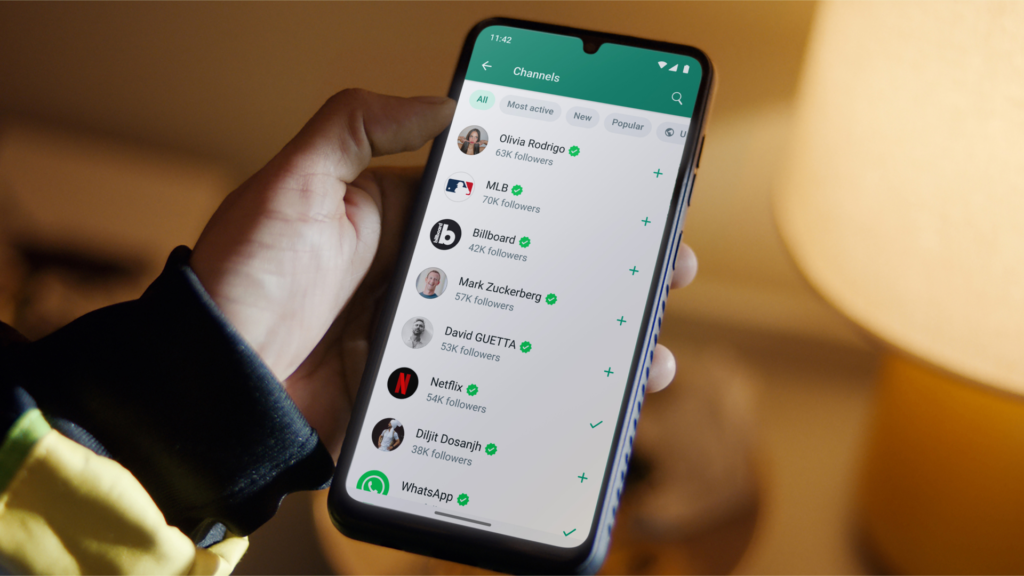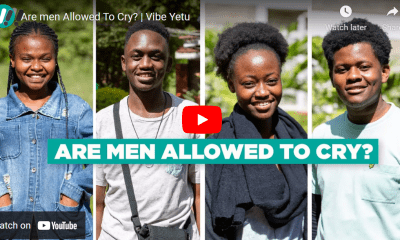Tech
DIGITAL LITERACY: PROTECTING AND SAFEGUARDING ON THE INTERNET
Published
2 years agoon

Do you recall how much we used to admire the large, heavy PCs in our school labs? The digital world has grown exponentially since then, and all our children now have access to the internet in one form or another—through a phone, an iPad, the TV, or even the home computer. Comprehensive digital literacy is more important than ever in order to guarantee that our kids are safe and make the most of their access while exercising caution and creativity. Recognizing this, the Communications Authority of Kenya initiated the Child Online Protection (COP) program, underscoring the critical need for an integrated approach to digital literacy that includes safety, awareness, and education. This initiative serves as a reminder that protecting our children online is a collective effort involving education, technological tools, and informed parenting.
In today’s world, digital technology is integrated into everyday life; understanding its nuances goes beyond basic functionality. Digital literacy encompasses a range of competencies including critical thinking in digital spaces, discerning credible information (especially with all the misinformation that happens on the internet), responsible online communication, and awareness of digital safety and privacy.
Integrating Digital Literacy and Why it’s Important for your kids. Safety through awareness and education: The internet is vast and ever-changing, presenting various challenges. To equip children for this, combine regular dialogues about online experiences with practical lessons on safety. Teach them the importance of cybersecurity, such as using strong passwords and understanding the risks of sharing personal information. This approach to digital literacy is like teaching them to navigate the complexities of the internet as confidently as they would cross the road. It’s critical to emphasize how digital literacy fortifies our kids to be savvy internet users, protecting them from fraud and cyberattacks. We ensure that they are not easily duped by teaching them to identify and steer clear of potential scams through the cultivation of an awareness of internet security. Instilling best practices for securing personal information goes hand in hand with this education and is essential to preventing hackers from accessing it.
2. Information literacy with guided exploration: Teaching children to discern credible from unreliable content is essential in the digital age, where information is abundant. Lead by example; show them how to evaluate sources and maintain a healthy scepticism about the information they encounter. Engage in constructive dialogue to help them understand how to filter and assess the vast amount of content they come across, turning every online interaction into a learning opportunity.
3. Cultivating creativity and innovation with encouragement and resources: Digital platforms are playgrounds for creativity and innovation. Please encourage your children to delve into these spaces by introducing them to various educational resources and creative tools. Guide them towards activities like programming, digital art, or joining online communities that foster constructive engagement. Celebrate their digital creations and milestones, reinforcing their interest in developing new skills and expressing themselves creatively.
4. Combating Online Bullying and Nurturing Self-Worth: An essential facet of digital literacy is teaching our children how to identify and cope with online bullying. It’s crucial to have an open dialogue about the realities of online interactions and to empower them with strategies to deal with any form of bullying they might encounter. This includes knowing when and how to report inappropriate behaviour and understanding the importance of seeking support from trusted adults. The development of a strong sense of self is equally vital. Promoting self-esteem-boosting activities and having frequent conversations about their internet experiences aid in preserving their sense of self. This strategy guarantees that adolescents traverse the digital world with confidence and a positive self-image, while simultaneously arming them against the detrimental effects of cyberbullying.
In a world where digital literacy is as crucial as learning to ride a bike, it’s imperative to guide our children through the digital landscape with diligence and foresight. By integrating the Child Online Protection (COP) initiative by the Communications Authority of Kenya (CA) into their digital education, we emphasize the importance of navigating online spaces with both confidence and caution. This ensures they are well-prepared, safe, and informed, enabling them to fully harness the vast resources of the digital world. As we embark on this journey with them, we lay a foundation not only for overcoming current digital challenges but also for seizing future opportunities, all while under the protective umbrella of initiatives like the COP by the Communication Authority. The COP program’s success lies in its multi-stakeholder approach, bringing together educators, parents, technology providers, and policymakers to create a safer online environment for children. We can adopt a similar approach in our homes by leveraging available resources and engaging with community and educational programs that focus on digital literacy and online safety. This collective effort enhances our children’s ability to navigate the digital landscape safely and creatively.
The journey of nurturing digital literacy in our children provides us, as parents, with a profound sense of peace of mind. When we equip our kids with the skills to navigate the online world safely, we’re doing more than just protecting them; we’re empowering them to make informed choices and recognize potential dangers. This knowledge acts as a safeguard, ensuring that their digital interactions are secure and beneficial. Knowing that our children can discern trustworthy information, protect their data, and engage online respectfully gives us confidence in their ability to handle the digital world’s complexities. We are confident that kids will be safe and okay as they explore the extensive materials available on the internet.
For more detailed insights into the Child Online Protection initiative, to visit the Communications Authority of Kenya’s website, Click Here.
You may like

Spotify, the worldwide music streaming giant, has unexpectedly raised its subscription prices in Kenya. This change impacts all subscription levels, ranging from the economical Premium Mini to the extensive Family plan.
Spotify has just announced that it will raise the prices across all its subscription tiers in Kenya. This increase reflects how much one will have to pay to access premium features of the music streaming platform, with a new price change that applies to several user plans. This move is part of a wider trend within the streaming industry, where globally, these platforms inflate their prices in response to inflation and increased operational costs. Beginning today, users in Kenya will pay more to listen to their favorite music streaming services as Spotify continues to add more features and music to the platform.
The prices in Kenya have risen by 13.3 percent to 40.8 percent depending on the particular subscription. The wide range shows that some plans only have a moderate adjustment, while others see substantial rises. That is to say, many users are likely reviewing their current subscriptions or their more financially apt tiers. Specific reasons for these particular percentage increases have not been discussed, but this shows the platform’s intention: keeping profitability with competitive services.
Amongst the lot of subscription options, Premium Mini received the highest increase in percentage terms. The plan, previously the most affordable that gave access to Spotify’s premium features for either a day or a week, is now one of the relatively dearer options compared to other tiers. This steep increase may particularly affect users who rely on short-term premium access for occasional use and encourage them to either upgrade to longer-term plans or switch to other streaming platforms.
Here’s a comprehensive look at how Spotify’s prices have changed for Kenyan subscribers:
| Plan | Old Price | New Price | Increase | Percentage Increase |
|---|---|---|---|---|
| Premium Mini (1 week) | KES 49 | KES 69 | KES 20 | 40.8% |
| Premium Individual (monthly) | KES 299 | KES 339 | KES 40 | 13.4% |
| Premium Student (monthly) | KES 149 | KES 169 | KES 20 | 13.4% |
| Premium Duo (monthly) | KES 389 | KES 439 | KES 50 | 12.9% |
| Premium Family (monthly) | KES 479 | KES 549 | KES 70 | 14.6% |
- Premium Mini:The most economical choice experienced the largest percentage rise, at 40.8%. Such a substantial increase could affect users who depend on weekly subscriptions and are mindful of their budgets.
- Premium Individual and Student: Both plans saw a 13.4% increase. Although the absolute increase for students is smaller, the percentage rise is the same as that of the individual plan.
- Premium Duo:This couples’ plan experienced the smallest percentage increase at 12.9%, potentially rendering it a more appealing option for couples aiming to save.
- Premium Family: The price of the most expensive plan rose by 14.6%, potentially impacting households dependent on shared accounts.
For individuals seeking to optimize value, the Duo and Family plans may provide greater cost-effectiveness for those who are eligible. Students are advised to keep their verification current to maintain access to reduced rates.
Tech
Infinix’s Hot Launch; The All New Hot 50 Series is Here
Published
1 year agoon
September 27, 2024
Over the last couple of months, Infinix has been making waves in the smartphone market, and their recent attempt at solidifying this move looks set to serve Kenyan consumers as the smartphone manufacturer launches their latest series of budget-friendly gadgets, and oh are they something.
The newly launched budget phone is the Infinix Hot 50i with functional elements users on a tight budget will find quite appealing. The budget-friendly market is where real competition exists if you ask me. Here’s whats on paper so far.
Infinix Hot 50i

The Infinix Hot 50i, part of the same Hot 50 series, brings its own set of features, which is powered by the MediaTek Helio G81, which is paired with 4GB of RAM.
However, this RAM can be expanded to 8GB, providing users with more flexibility depending on their usage requirements. This model offers similar performance in day-to-day tasks but at a more affordable price point.
Infinix Hot 50i Specs
- Display: A large 6.7-inch IPS display with a resolution of 720 x 1600 pixels and 120Hz refresh rate.
- Processor: Powered by the MediaTek Helio G81 processor, for smooth performance for everyday tasks and gaming.
- RAM and Storage: Available in configurations of 4GB or 6GB RAM, which can be virtually extended up to 8GB. The device also boasts a generous internal storage capacity of 256GB.
- Camera System: 48MP rear camera and an 8MP front camera for selfies.
- Battery Life: 5000mAh battery that supports 18W fast charging.
- Audio: Dual DTS speakers designed to enhance sound quality, making it ideal for music lovers and media consumers.
- Operating System: Runs on XOS based on Android 14, providing a user-friendly interface with various customization options.
- Additional Features: A side-mounted fingerprint sensor for security, a USB Type-C charging port, and TÜV’s 48-month performance certification for long-term reliability.
Infinix Hot 50i Pricing
The Hot 50i is available in the Kenyan market at a price of KES 13,699, making it an attractive option for those looking for an affordable, yet capable smartphone.
The phone comes three attractive color options: Sleek Black, Sage Green, and Titanium Grey.
It will be widely available in retail stores after September 30th. Stay tuned to watch us review these units and give you a hands-on review of whether this should be your next phone or why not.
Tech
New WhatsApp Feature Lets You Mention Contacts In Status Updates
Published
1 year agoon
September 19, 2024
WhatsApp has recently added a new feature to its Status updates, allowing users to tag contacts directly.

Currently available on Android for users with beta version 2.24.20.3 or higher, this update introduces a @ button that lets you mention specific contacts in your Status.
Once tagged, they receive both a notification and a message, ensuring they won’t miss your update. Tagged contacts can also reshare your Status, but only they will see their mention, preserving privacy.
Unlike Instagram, WhatsApp keeps the identity of the original Status creator hidden when tagged contacts reshare it. One key thing to note is that if you’ve blocked someone from viewing your Status, they can still see it if tagged using this feature.
This update, along with WhatsApp’s other hidden features, aims to make interactions more personal and dynamic on the platform.

Meghan Markle Delays Netflix Series Premiere Due To LA Wildfires

Satire Meets Culture On New Comedy Series ‘A Very Kenyan Sketch Show’

Netflix Set To Debut A Gripping Kenyan Drama Series ‘Mo-Faya’
Trending

 Adulting 1013 years ago
Adulting 1013 years agoPersonal Brand Online (Part 2)

 A Chat With3 years ago
A Chat With3 years agoA chat with DJ Elye (the sunday skool drop out)

 Adulting 1013 years ago
Adulting 1013 years agoPersonal Branding (Part 1)

 A Chat With4 years ago
A Chat With4 years agoA MOMENT WITH SHARON WENDO, FOUNDER OF EPICA JEWELLERY

 Health1 year ago
Health1 year agoLet’s Get Mind, Body and Spirit Aligned!

 Entertainment3 years ago
Entertainment3 years agoKenyan Movie Disconnect: The Wedding Planner Is Now Streaming On Netflix

 A Chat With3 years ago
A Chat With3 years agoFind out why ‘mutura is not a street food’ as Wanjira Puts it!

 A Chat With3 years ago
A Chat With3 years agoAre men allowed to cry?




















